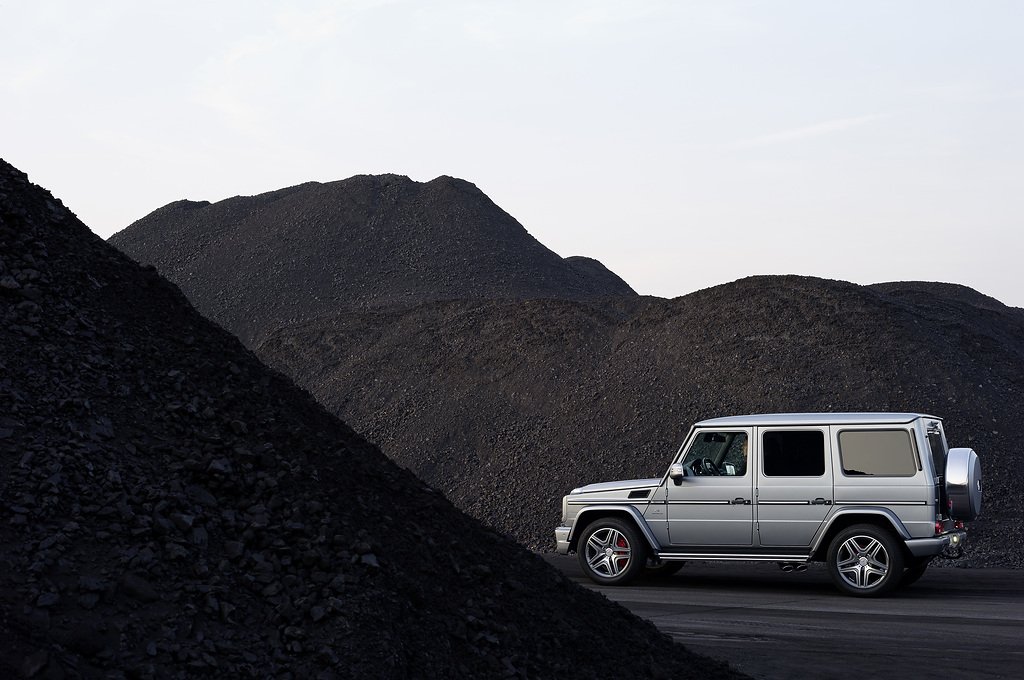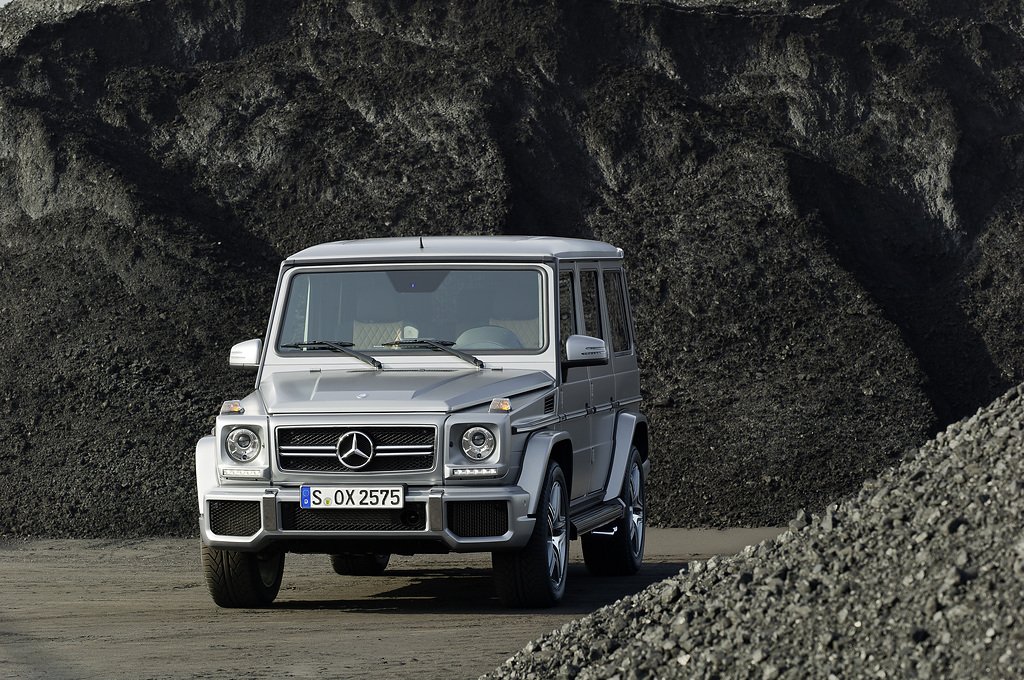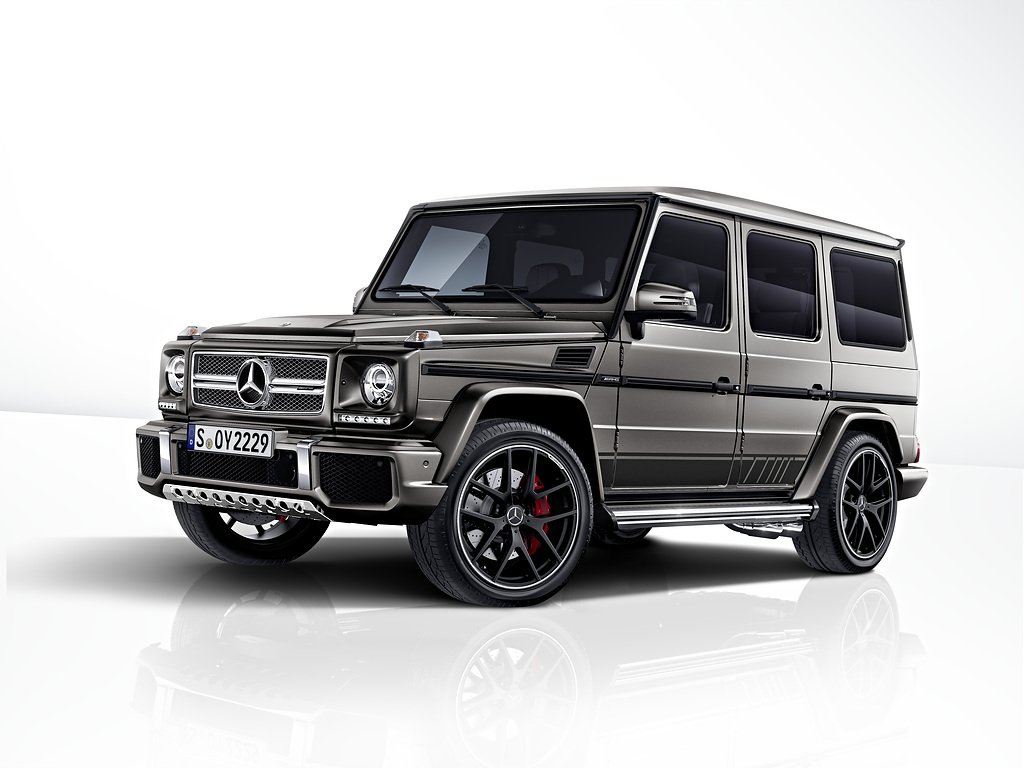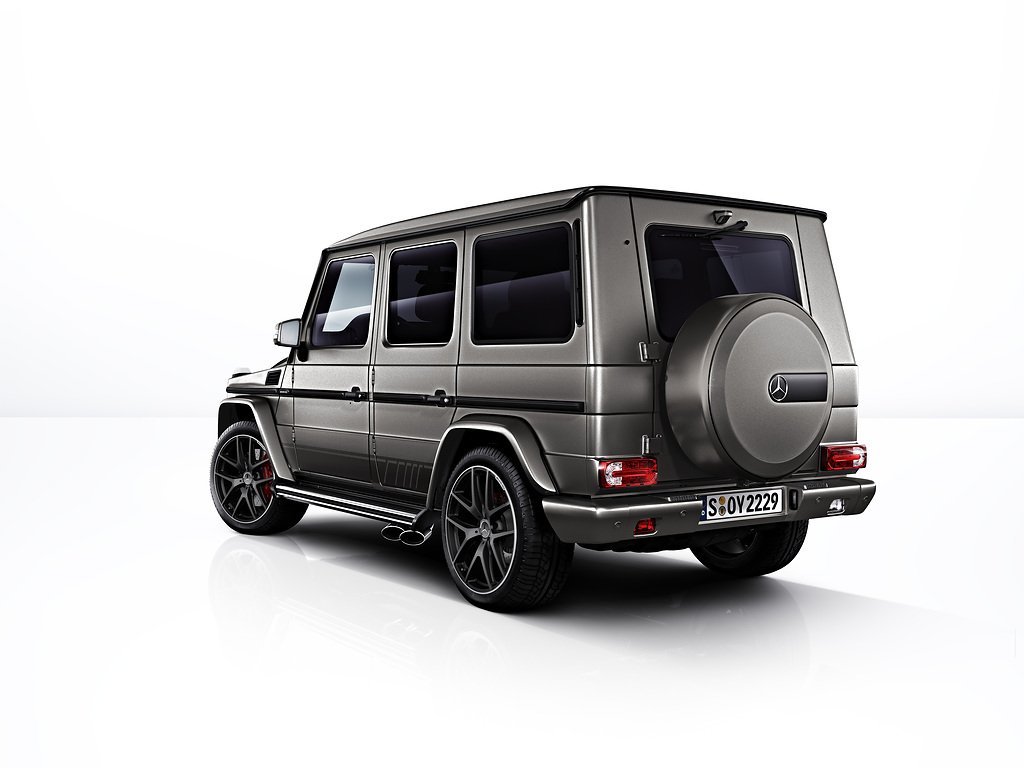Mercedes-Benz G-Class, the collectible that stands the test of time
A riddle. Dreamed of by the Shah of Iran, I served as a crowd viewing bubble for the Pope. I won the Paris-Dakar. I'm a hip-hop star and I'm cut like a Norman wardrobe. Who am I?
Here is the fabulous story of the Mercedes G-Class.
Just like a dinosaur that survived extinction, the Mercedes G-Class today seems to be evolving in a parallel world, where political correctness does not count, erring between the lines of an armed conflict and the cosseted atmosphere of an upscale neighborhood. Nearly 50 years after its conception and 41 years after its launch in 1979, it is still on the prowl, seemingly unchanged.
A military birth
The history of the Mercedes G-Class began back in the early 1970s. The Shah of Iran, Mohammad Reza Pahlavi, was then one of the reference shareholders of Daimler-Benz, holding some 25% of its shares. It was, therefore, quite naturally towards the latter that he turned to equip his army with an all-terrain vehicle, of which he ordered 20,000 examples. This was an order colossal enough for Mercedes to initiate immediately a feasibility study for the project. To achieve this, the German manufacturer called on its Austrian cousins Steyr-Daimler-Puch (now Magna Steyr). Based in Graz, this company had solid experience in four-wheel drive, since it had already manufactured the famous Pinzgauer military vehicle, well known to the Swiss army.
Thereafter, followed the production of several prototypes, the fine-tuning of which too place on the slopes of Mount Schöckl, a stone's throw from the headquarters of Puch and thereafter from the Sahara to the Arctic Circle. In the course of the following months, the name G-Wagen (for Geländewagen, all-terrain car in German) was adopted. The designers of the project obviously had military use in mind, but a market study dating from 1972, already predicted the trend of a clientele desiring 4x4 cars for their leisure activities - the name ‘SUV` had not been invented then – so, at the same time, a civilian version was developed for private individuals.
A stripped-down G-Wagen at its launch
On February 4, 1979, the Mercedes-Benz G-Wagen was officially presented at a press conference in France, however, the atmosphere was not festive: in the meantime, the Islamic revolution had blown up, and the Shah of Iran, their partner, had gone into exile. A few days later, he was overthrown, thus eliminating the order of 20,000 cars planned for the Iranian army. After years of development, Mercedes found itself with an off-roader with fantastic skills, but no customer!
Salvation finally appeared from the other side of the world, since it was the Argentine armed forces which placed an order for 800 G-Wagens, thus allowing production to start in earnest. Military personnel from Germany, Norway, Denmark, Canada, Malaysia, the Netherlands and the United States followed suit. The French even went so far as to develop, under license, their own version of the Geländwagen under the name of Peugeot P4. Switzerland and Austria, where the model was delivered under the name Puch G, also joined in.
At the outset, three bodyworks were on offer: a convertible, a short break and a long wheelbase, followed by two open panel models, demanded by professional customers. The G-Wagen’s civilian career also got off to a flying start, as it stood out in the eyes of the general public.
In 1980, the Pope himself converted to the G-Wagen. A fully glazed Mercedes became John Paul II's travel companion, appearing on TV channels around the world. Three years later, Belgian driver Jacky Ickx won the 1983 Paris-Dakar rally at the wheel of a two-door G-Wagen. A tasty anecdote says that during the 1986 edition of the same event, Porsche lined up a monstrous 959 at the start and chose a Mercedes G-Wagen as the service car for its mechanics and it was this model which ranked second overall!
Mercedes G-class turned into a Popemobile.
Jacky Ickx competing the 1983 Paris-Dakar at the wheel of a two-door G-Wagen.
G-Class and the middle classes
Little by little, the G-Wagen was gentrified. Between 1981 and 1989, it was gradually fitted with an automatic transmission, air conditioning, leather seats, and ABS braking. The old market study of 1972 did not lie: individuals were snapping them up and they invaded the smarter neighborhoods.
So much so that for its' ten-year career, Mercedes finally took note of this schizophrenia: the civilian version of the G-Wagen took the name of G-Class at the 1989 Frankfurt Motor Show, where a version equipped with a front end and a more statutory interior appeared under the code name 463. At the same time, the original type 460/461 version remained almost unchanged and became exclusively reserved for the armed forces and professionals.
Much the same for its’ 20th anniversary in 1999. In that year, Mercedes-Benz purchased AMG. Now an internal subsidiary of the firm with the star, the supplier from Affalterbach leant over the G-Wagen and offered it the G55, a monster equipped with an atmospheric V8 of 5.5 liters and 354 horsepower. A G63 AMG followed and even a V12-block G65 AMG developing 612 hp. Range Rover and other Porsche Cayennes had better watch out: the steroid-inflated shoebox style of the G-Class is all the rage with Russians and other billionaires in the United Arab Emirates. In America, rappers go so far as to dedicate songs to the model.
Yet that was just the start of the madness. True to its tradition of military-civilian duality, a 6×6 version was launched in 2013, fitted with a raised 6-wheel drive chassis and an AMG engine. It was the evolution of a model developed in 2008 at the request of the Australian army. Other even more exclusive models are emerging, such as the 2017 Mercedes-Maybach G 650 Landaulet, an extravagant raised and extended off-roader, the rear section of which, with first class seats, can be opened up. Limited to just 99 cars, the prices is around €750,000.
Object of Lust
In 2018, anticipating its 40th anniversary, the G-Class offered itself a small revolution. Under practically unchanged outer finery, a completely new platform was adopted. Its handling has evolved to match that of its main competitors, while retaining its legendary off-road capabilities, thanks in particular to its three differential locks. This new version pushes the limits of exclusivity a little further while retaining the charm of the old models. Mercedes engineers have gone so far as to preserve, voluntarily, certain outdated features such as exterior hinged doors that have to be slammed shut vigorously.





Today, its’ popularity rating is stronger than ever. According to the latest news, most of the brand's dealers are reluctant to take new orders, as delivery times have lengthened, while on the side of the military, its’ ranking is not declining either, since the Swiss army has recently placed an order for an additional 3,200 new G-Wagens.






